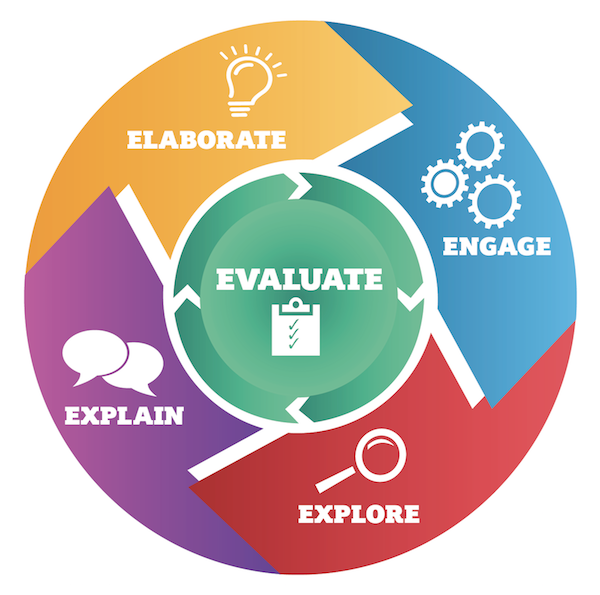With so many teaching models already existing, educators often find it hard to choose the teaching strategy that is going to suit the needs of their students in the best way possible. It goes without saying that, at the time of online teaching, teachers always look for ways to explain a particular concept to them by piquing their curiosity and then letting out all the details of it gradually. After all, the teaching method has to keep the interests of the students at the core!
One of the incredibly good ways to instruct the students is by following the 5E model. Wondering what that is? Well, don’t worry! This blog will discuss everything that you need to know about this highly effective learning model.
Definition Of The 5E Instructional Model
The 5E instructional model is a learning cycle consisting of five main stages- Engage, Explore, Explain, Elaborate, and Evaluate. This teaching model makes the students more active as they don’t only listen to what the teachers have to say but also analyze the subject matter and come up with their doubts. They act more like investigating an issue and then seek the help of the teachers to solve the problems that they have got while digging into the concept.
“It (The 5E Model Of Instruction) provides a carefully planned sequence of instruction that places students at the centre of learning. It encourages all students to explore, construct an understanding of scientific concepts, and relate those understandings to phenomena or engineering problems.”
-Rodger Bybee
This instructional model encourages collaboration among the students and their peers in framing explanations, drawing out solutions to problems, and executing strategies to carry out investigations in a particular subject matter. This learning model was developed in 1987 by the Biological Sciences Curriculum Study and since its inception, the students have been encouraged to bring out solutions to problems by making queries, arguing, and then reaching a proper conclusion.
Inspired by the constructivist theory of learning, this 5E teaching model motivates the students to construct knowledge from what they have understood and frame their understanding properly from their own experiences. To teach online via this inquiry-based learning model, educators need to make it a point to trigger an inquiry and instigate the students to explore and come up with interesting bits of information that they can share with their peers.
Let’s now have a look at the detailed description of the phases of the 5E model of instruction.
Phases Of 5E Model Of Instruction
#Phase 1: Engage
This first stage of the 5E model of instruction involves the teachers getting a knowledge of the students’ basic idea about that topic and assessing how well they acquire an understanding of the topic. Besides, the teachers also identify the gaps in the knowledge of the pupils and help them have a correct understanding of the subject matter. This phase is all about piquing the interest of the students so that they get a natural interest in delving deep into the topic. Teachers may initiate an open-ended question in the class so that they get automatically drawn to the topic.
#Phase 2: Explore
By initiating solid learning experiences, students conduct research and explore the various sources of information about the topic that they are learning. The hypotheses prepared by the students are assessed and their scientific method of approaching the topic was also tested.
#Phase 3: Explain
This phase involves the teachers solving the queries of the students after they have explored deeper into the topic that they have learnt. Only after the queries of the students are addressed, teachers go ahead to share further details of the topic. Educators also provide the pupils with explanations via lectures and presentations. Students are expected to form critical responses and come up with their own justifications and understandings of the topic that they are being taught.
#Phase 4: Elaborate
In this stage, teachers encourage the students to apply their concepts and theories to new circumstances. They also provide the students with additional learning resources and explanations, if needed. In short, this phase is all about explaining the topics in a broader light to the students.
#Phase 5: Evaluate
The evaluation can be either formal or informal. Teachers may also ask debatable questions to the students and test how well they frame their responses. Students may also check their work with a rubric and then frame the answers of the exams as the question demands of them.
The Last Words
The 5E instructional model is a great way to arouse the interest of the students in the topic that they are studying. Moreover, teachers can also do their part by explaining to them everything in detail and testing how well they have retained the facts into their memory. Overall, this is a great way of studying and researching to motivate the students to indulge in the learning process actively.
Is a freelance tech writer based in the East Continent, is quite fascinated by modern-day gadgets, smartphones, and all the hype and buzz about modern technology on the Internet. Besides this a part-time photographer and love to travel and explore. Follow me on. Twitter, Facebook Or Simply Contact Here. Or Email: [email protected]







Leave a Reply